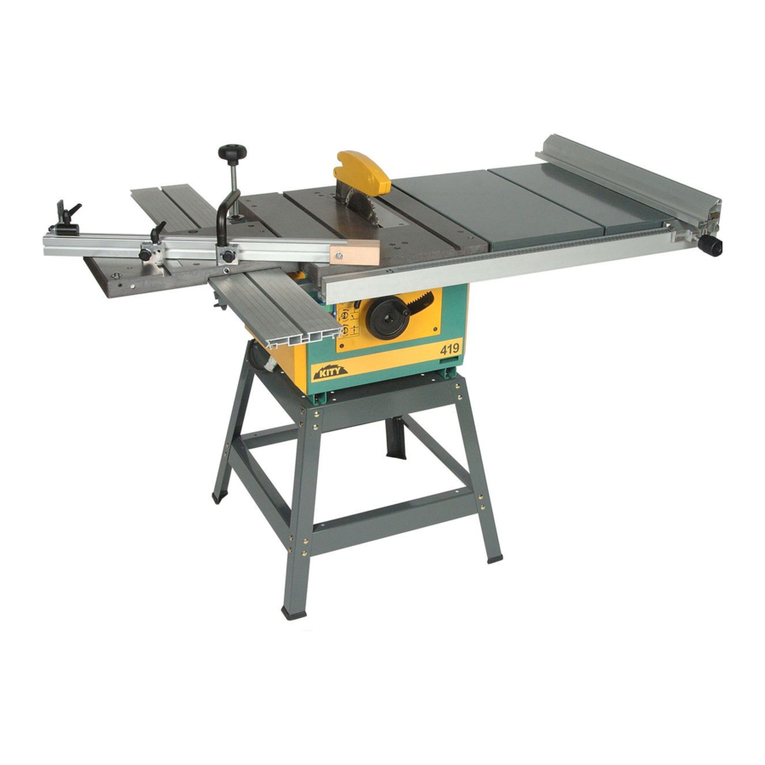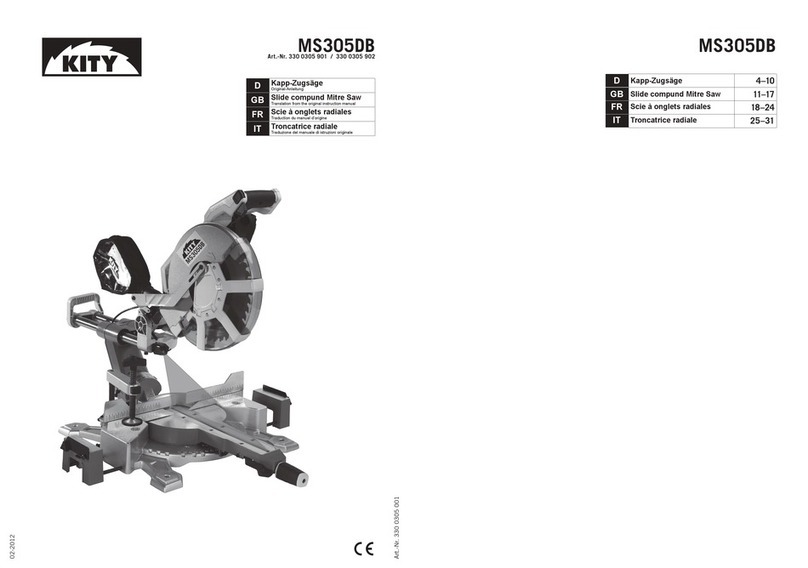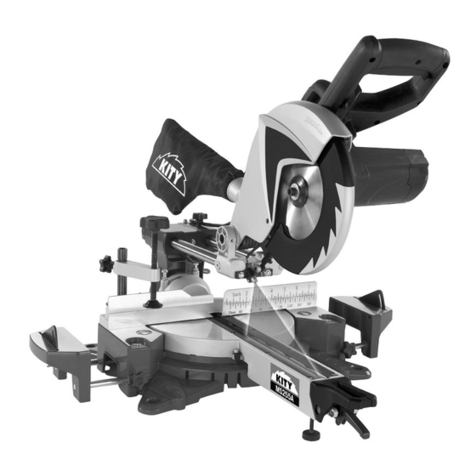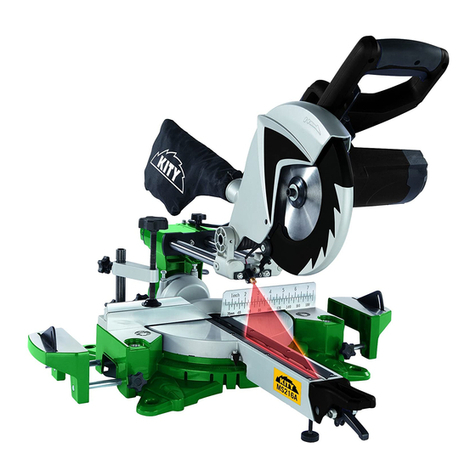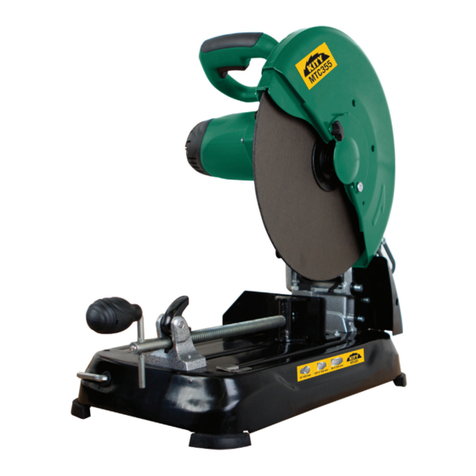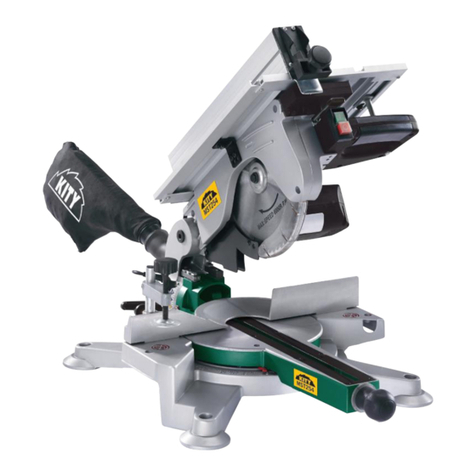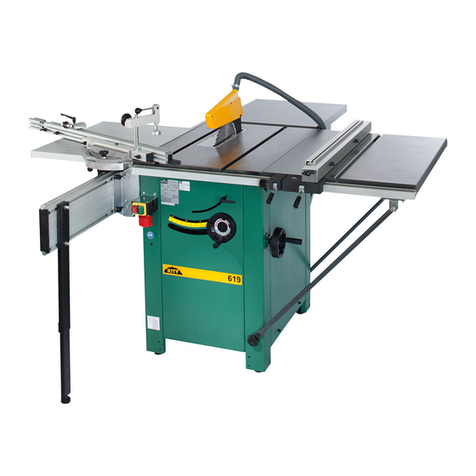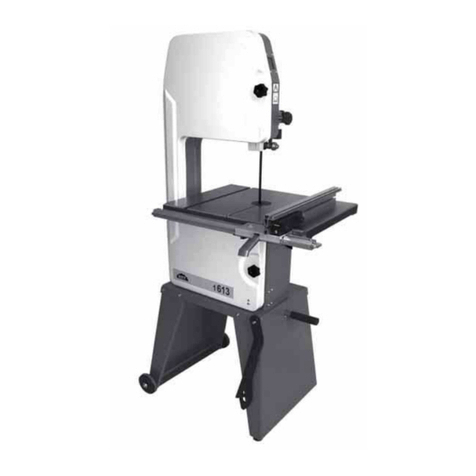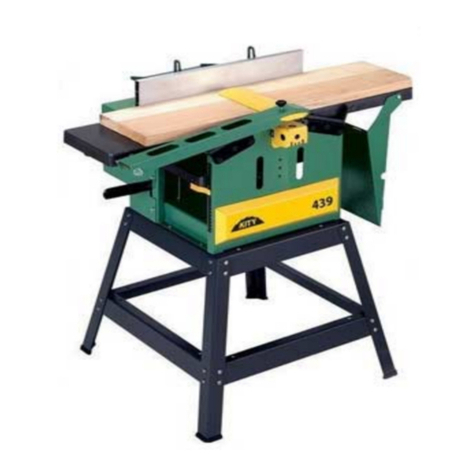
10
3.
Montage
et
réglage
des
éléments
de
protection.
1)
Monter
et ajuster le couteau di-
viseur
et
la
cape protectrice par
rapport à
la
lame.
a - dans le sens horizontal
b - dans le sens vertical
Respecterl'espace
de
3
mm
(Fig
. 1
5)
Serrage par écrou H 1
O.
Pour l'alignement corriger le déport
éventuel par action sur les vis
B.
2) Régler le protecteur à
la
hauteur
des pièces à scier.
Le
bloquer en position à l'aide de
la
manette
(C
-fig. 15).
Quand, pourune raison imprévisible
le bois
se
resserre accidentellement
sur
la
lame de scie au-delà de son
axe
, il peut être soulevé de la table
(flèche), mais ce mouvement est
arrêté par le protecteur (fig. 16).
3)
Travailler avec le poussoir chaque
fois
que:
-
la
pièce est de faible dimension
-que la main
es
t dans
la"
zone
dangereuse, c'est-à-dire à moins
de 10 cm de
la
lame.
PRENEZ SOIN DE VOS
MAINS
Ml;TTEZ DES PROTECTEURS
.......
a
3.
Montage
und Einstellung der
Schutzvorrichtung
1)
Spaltkeil und Schutzhaube nach
dem Sâgeblatt montieren und
einstellen (siehe Abb. 15).
a - waagerecht
b - senkrecht
Abstand von 3
mm
zum Sâgeblatt
einhalten, Spaltkeil festschrauben.
Seitliche Versetzung des Spaltkeils
durch Schrauben
(B
-Abb. 15)
nachstellen.
2.
Wichtig
! Schutzhaube immer auf
das
zu
sâgende Werkstück ein-
stellen und
mit
Klemmhebel
(C
-Abb. 1
5)
blockieren.
Sollte durch Rückschlag das
zu
sâgende Material angehoben
werden,
wird
es
durch die ein-
gestellte Schutzhaube auf den
Sâgetisch gedrückt
(s
iehe Abb. 1
6).
16
3)
Bei schmalen Werkstücken
aus
Sicherheitsgründen in'lmer
mit
Schiebestock arbeiten (siehe Abb.
17).
ACHTEN SIE
AUF
IHRE
HÂNDE
ARBEITEN SIE
IMMER
MIT
SCHUTZVORRICHTUNGEN.
15
3. Fitting
and
adjusting
the
safety
equipment
1)
Fitting and adjusting the riving
knife and the protection hoodwith
regard
to
the saw blade.
a - horizontally
b - vertically
Leave
a space of 3
mm
(fig. 15).
Fastening by screw H 1O.
To
al
ign, rectify
an
y deviation
by
aid
of
the screws
B.
2) The protection hood
to
be
adjusted
to
the hei
ght
of
the work piece.
When in correct position, tighten
with
handle
(C
-fig. 15).
If,for any unforseeable reaso
n,
the
work piece gets "stuck" on the
saw blade itmaybethrown forward
(arrow) however, this movement is
stopped
by
the protection hood
(fig.
16
).
3)
Always use the push stick with
every eut.
-especiallywithshortwork pi
eces
-when than
10
cm from thesaw
blade.
BE
CAREFUL
WITH
YOUR
HANDS
ALWAYS
USE THE GUARDS


